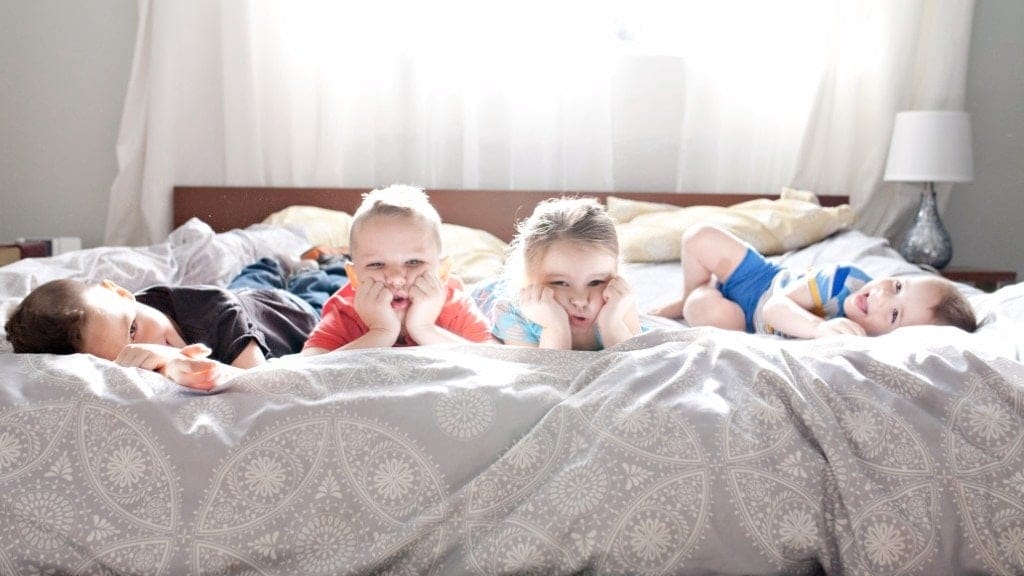Help your kids solve sibling fights—without affecting your own relationship

Play matchmaker!
Parents routinely believe the greatest gift they can give their child is a sibling to grow up with, but this thought can be quickly shattered when these same children erupt and attack each other physically or verbally.
Wading into sibling conflict can feel like tricky territory.
On one hand, a parent will feel propelled to protect the child who is under attack, but what about your other child who is also full of frustration? How can adults lead through incidents while at the same time preserving their relationship with each child?
Sibling conflict is an area parents long for quick fixes. In reality, it is maturity that should provide the ultimate answer to their uncivilized ways of relating with each other. Until then, we are going to have to take the lead.
There are a few things to keep in mind as you try to take charge when your kids are struggling with each other.
1. Control the circumstances, not the child
When kids struggle, they need adults who will step in and take an active role in stabilizing the chaos that has erupted. This may mean dealing with things in the moment and simply addressing them with statements such as, “This isn’t working,” “This needs to stop,” “Brothers aren’t for hitting,” or, “Sisters aren’t for yelling at.”
It is important to try and control the circumstances around the kids rather than to control an out-of-control child. If they need to separate from each other, try to do it in a non-shaming way such as, “We need to take a break,” or “I am going to help you find something else to do because this is not working out right now.” You may also decide to address the problem between them at a time when they can emotionally hear you.
For kids it can also be a source of wounding when they see their adults fail to jump in to intervene in difficult situations with their siblings. Adults need to be counted on as protectors and guides—if they let a child down this way continuously, the relationship with their adult can suffer.
2. Focus on understanding, not judgement
In order to protect your relationship with both kids, it is best not to play the role of judge and jury. If the focus on intervening is about fairness and understanding who is to blame, at some point one child will feel you are being less loyal to them and the incident will quickly transform into a relational one with you.
What you can do instead is to listen and acknowledge each child’s side and their frustration. For example, “You are upset because your sister yelled at you,” and, “You are upset because you were pushed in return.” While letting them know this isn’t how we deal with problems, you can convey that you understand how they are feeling.
To come to each child’s side emotionally conveys that you are with them, and allows you to address the problem with their behavior. For example, “I see you are both upset so I am going to help you with how we are going to share this toy.”
With older kids who have had a hard day at school and are taking their frustration out on a sibling, for example, you might come alongside them and say, “I can see you had a frustrating day and it needs to come out, your younger sister is not the person this should happen with. I am here and I will help you with this.”
When you focus on helping kids understand the emotions that drove them to act this way, you are better positioned to help them act differently the next time. It is emotion that drives behavior and that is where we want to do our work.
In order to hold onto more than one child at the same time, it is also important to bridge the problem behavior and convey a desire to be with each child despite conduct. If it is necessary to talk to each child later, after the incident, it may be best to do this one on one rather than together.
3. Use your relationship to solicit good intentions
The stronger your relationship with your child,, the more you can influence them to act differently the next time they are having problems. In debriefing incidents you can solicit their good intentions by asking them to, “Call me when you need help,” or “Share your toys and take turns,” or “Use your words to communicate.”
While they may still lose their good intentions in the heat of the moment, it does pave the way for them to consider how they can act differently and reiterates your expectations.
It also helps to keep in mind that when kids are emotionally overloaded, they know much better than they can behave (this goes for adults too). Emotional maturity takes time and patience. We need to keep our relationship with our kids strong so they can continue to mature and be guided by us.
4. Impose order through structure and routine
When kids struggle with each other it may be helpful to consider the overall structure they are operating under, as well as imposing some routine.
For example, if young kids are left alone, it is likely that they will engage in territorial battles over toys or people. This is the same for poorly supervised playgrounds and school recesses.
An important part of a child’s environment and structure should involve supervision by adults who can step in and provide guidance for their interactions. For older kids it might involve being in earshot so as to counter inappropriate ways of relating.
In terms of routine, when things are left open to interpretation, there is more leeway to fight over how things should be done. If you have specific routines in place, such as who goes first and how you will share things, there is less that is up for grabs.
5. Remind them about what they have in common
To cultivate a stronger attachment between siblings, it is helpful to play matchmaker by pointing out their similarities and areas of sameness. To activate their instincts of belonging and loyalty, get them working together on something, or playing and having fun with you.
It is also helpful to enlist the older child to take on a ‘big sibling’ role and point them towards helping their sibling. When a child is in the position of helper, it will move them out of competing and into the position of caring.
Bottom line: The only way to truly avoid sibling conflict is to only have one child. Conflict is something that comes with the territory of taking care of more than one immature being at a time. Conflict is also part of human relationships as we navigate having different feelings and needs from each other.
We need to lead through conflict, preserve our relationship with each child, and help them understand the emotions that drive them. We need to preserve order, point them towards a more civilized form of relating and be patient until maturity delivers, with our help, an emotionally mature, reflective, independent, and tempered individual.


































